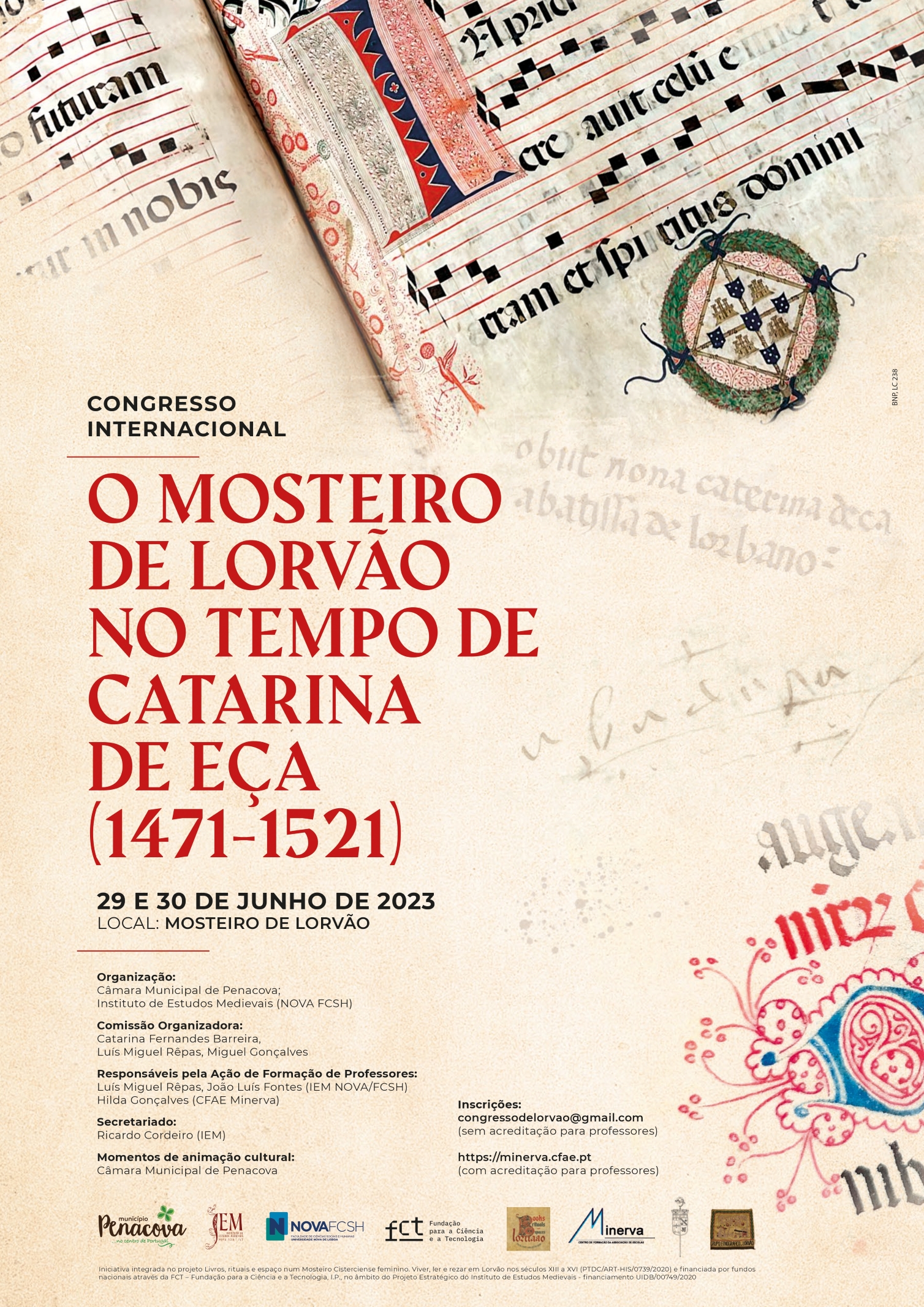Internacional Conference: “O Mosteiro de Lorvão no tempo de Catarina de Eça (1471-1521)”
29.06.2023 - 30.06.2023
Mosteiro do Lorvão, Penacova

The International Congress “O Mosteiro de Lorvão no tempo de Catarina de Eça (1471-1521)” will take place at the Monastery of Lorvão (Penacova, Coimbra) on June 29th and 30th.
Today we know better the succession of important women who, during the medieval centuries, governed the main and richest Portuguese Cistercian monasteries, with particular focus on those of Arouca and Lorvão. Among them, the present colloquium intends to highlight and study the figure of Catarina de Eça. With a long abbessate (1471-1521) at the head of the Lorbanese community, in a phase of profound changes in the religious and political life of the kingdom, Catarina de Eça emerges as a figure with a particular authority, managing to impose a true “dynasty” in the government of this important monastery and developing a whole strategy of prestige and affirmation of her family and the monastery, immediately witnessed by the artistic enterprises she promoted: the construction of new buildings and the renovation of other existing ones; investments in architecture, sculpture and painting, or even the commissioning of devotional images and liturgical equipment, such as alfaias, vestments and manuscript codices. The fact that Catarina de Eça left her coat of arms (coat of arms) or inscriptions on many of these orders allows us to follow the trail of her patronage, visible even in spaces that go far beyond the monastic enclosure, such as the church of Botão (c. Coimbra) or the church of the Franciscan Convent of Espírito Santo of Gouveia, where her family pantheon was located, which Catarina de Eça favored with the donation of relics of the Martyrs of Morocco belonging to the nuns of Lorban.
Like so many other women who, around the same time, are committed to the reform or consolidation of so many other religious communities, either in the government of monasteries or in the foundation or support of new religious houses – from the Dominicans of Aveiro or of Paraíso of Évora to the reformed monasteries of Jesus of Setúbal or of Madre de Deus of Lisbon, Catarina de Eça is also an exemplary case of this female authority, where religion and power are articulated in the management of family and monastic patrimony, in the promotion of splendor and exemplary worship, in architectural and artistic investments, in the valorization and consolidation of power and the memory of her lineage. His abbessate also witnesses a time of contrasts, contradictions and changes, even in the face of an order that seeks to renew itself through a more attentive vigilance and correction of its communities, sought through general visitations ordered by the Cistercian General Chapter. It was also a time of diversified religious reforms, of social and artistic transformations, of wealth and expansion into new territories beyond the frontiers.
It is therefore around this woman, her time and her government at the head of the Lorban community that this colloquium is centred, seeking a renewed look at the multiple testimonies, namely the material testimonies that document it, now questioned from new methodologies, new problems and new angles of analysis. To this end, it is based on an interdisciplinary project, which relies on a diverse team of researchers, allowing for the intersection and dialogue between different fields of knowledge, such as History, Art History, Musicology, Liturgy, Paleography, Sigillography, Codicology, Genealogy, Heraldry, Chemistry, and Conservation and Restoration. Their contributions, and those of other researchers, may now reach a wider audience interested in the History and the Monastery of Lorvão, by making known the results of the most recent research produced in the academic field, within several research centers, and by reinforcing the importance of the effort being undertaken to safeguard and manage the valuable heritage (built and movable) associated with Lorvão.
